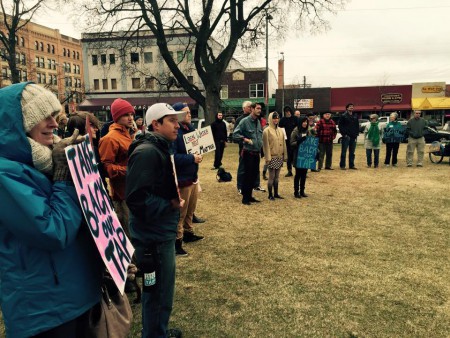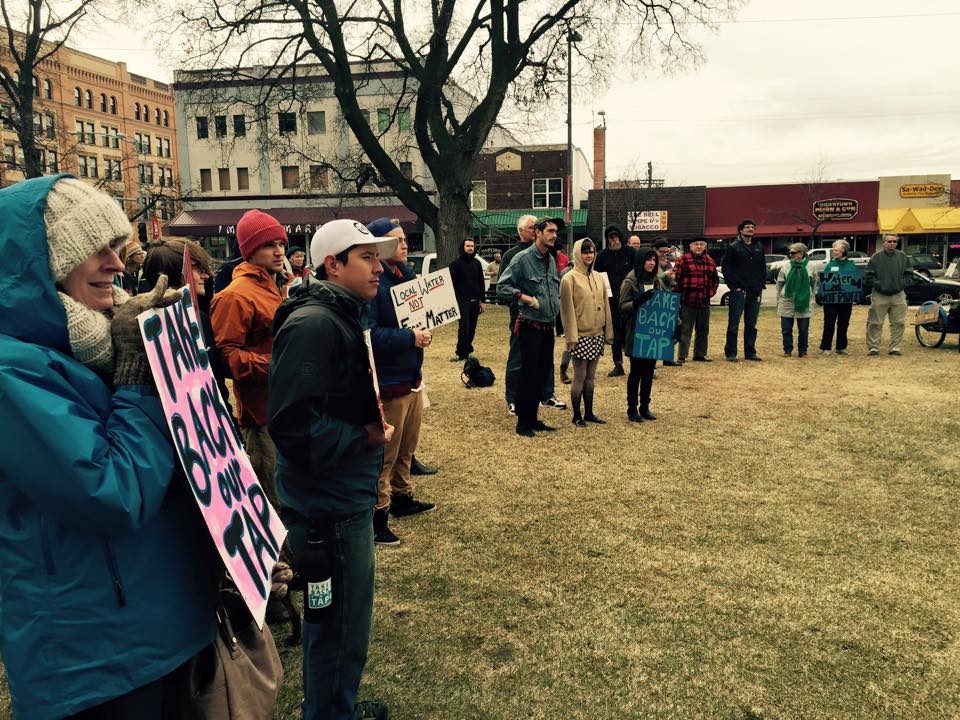 By Rebecca K. Smith, CLDC Board President and Cooperating Attorney
By Rebecca K. Smith, CLDC Board President and Cooperating Attorney
In a significant defeat for the multinational corporate privatization agenda, this week the town of Missoula, Montana seized its water supply and distribution system from the Carlyle Group via eminent domain. The Carlyle Group is infamous across the globe for its terrifying business model that essentially commodifies life and death: from its commodification of water, life’s most basic necessity, to its well-known commodification of war. The Carlyle Group had purchased Missoula’s water distribution system from another private company years ago, and expressed interest in bottling and selling the water. The town resisted and filed a lawsuit to take the water system from the Carlyle Group by eminent domain. After a 12 day trial, in a true David vs Goliath story, the town prevailed.
Under Montana law, a city may use eminent domain to take private property that is “already appropriated to a public use.” MCA §70-30-103(1)(c). Before the taking of private property may occur, the city must prove that it is more likely right than wrong that the public interest requires the taking. MCA § 70-30-111 (1). A property that is already appropriated to a public use may only be taken through eminent domain for a “more necessary public use than that to which it has already been appropriated.” Montana law expressly allows that eminent domain may be exercised for “water and water supply systems.” MCA 70-30-102(6).
In a 68-page opinion issued this week, a court ruled that the public interest required public ownership in this case, and that public ownership was a “more necessary public use” than ownership by Carlyle. To determine the issue of public interest and necessity, the court considered effects on employees, profit and out-of-state ownership, public savings, rates and charges, cooperation between the company and city, location of the home office, and perhaps most importantly, “the importance of the City obtaining ownership of water rights themselves in order that the City may assure its inhabitants of long range access to water.”
In one key ruling, the court found that “[u]nder City ownership, the Water System would not have to generate profits to meet investor expectations. Under City ownership, only those revenues necessary to operate and maintain the Water System would be charged to customers.” Additionally, “[u]nder municipal ownership, rates would be set by the City.” What this means is that the “[c]onsumers have the opportunity to directly address council members” who are setting the rates. In other words, city ownership of water leads to a system of local and democratic self-governance over water.
The court also rejected Carlyle’s characterization of water as a “product,” because that characterization ignores the “critical nature of water supply and its inextricable link to the public health, safety, and well-being of the community.” The court held that Carlyle’s ownership of the water supply “was a short term investment for the benefit of a corporate owner and its shareholders and investors. Short term investments for the benefit of investors are incompatible with long term planning and investment needed to ensure the reliable delivery of clean water.”
The people’s battle for control over their own water is not limited to Missoula, Montana. Fortune magazine recently defined water as “the oil of the 21st century.” Multinational corporations across the globe are ramping up efforts to purchase and stockpile water as a commodity to sell for profit in the face of foreseeable climate change-induced droughts and water shortages. In this way, the struggle for water in Missoula is the same as the struggle for water in dozens of other communities around the globe. The good news is that a recent report from the Transnational Institute documents that between 2000 and 2014, 180 cities and communities in 35 countries, including Buenos Aires, Johannesburg, Paris, Accra, Berlin, La Paz, Maputo and Kuala Lumpur have all reclaimed water ownership from private control.
In a recent presentation entitled “Transitioning to Climate Justice,” journalist Naomi Klein spoke about the need to build a sense of solidarity among the individual struggles faced by oppressed and minority groups, in areas like worker’s rights, racial justice, economic justice, and environmental justice. Klein suggests that the climate justice movement can bring these issues together to strengthen what the Koch Brothers fear and refer to as the “collectivist” agenda. What the Koch Brothers mean by “collectivist” is that we are organizing for the collective, public good in contrast to an agenda that prioritizes profit above all else.
At CLDC, we agree with Klein’s analysis, which is why we organized the first Next Generation Climate Justice Action Camp for youth organizers last summer. Our goal is to take the collective wisdom from experienced social and environmental organizers who have spent their life’s work organizing on many different issues, and pass that wisdom on to the youth who will be the next generation of organizers in the climate justice movement. CLDC is uniquely qualified to act as an organizer in this respect because through our legal work over the last decade, we have represented and supported organizers and activists working on nearly every issue imaginable: economic justice, racial and gender equality, immigration rights, worker’s rights, environmental protection, and more. Now we are bringing these individuals and individual issues together for the purpose of furthering our “collectivist” agenda in a strong climate justice movement. Join us for the second annual Next Generation Climate Justice Action Camp in August. See our website for more details: www.cldc.org/2015-camp/

